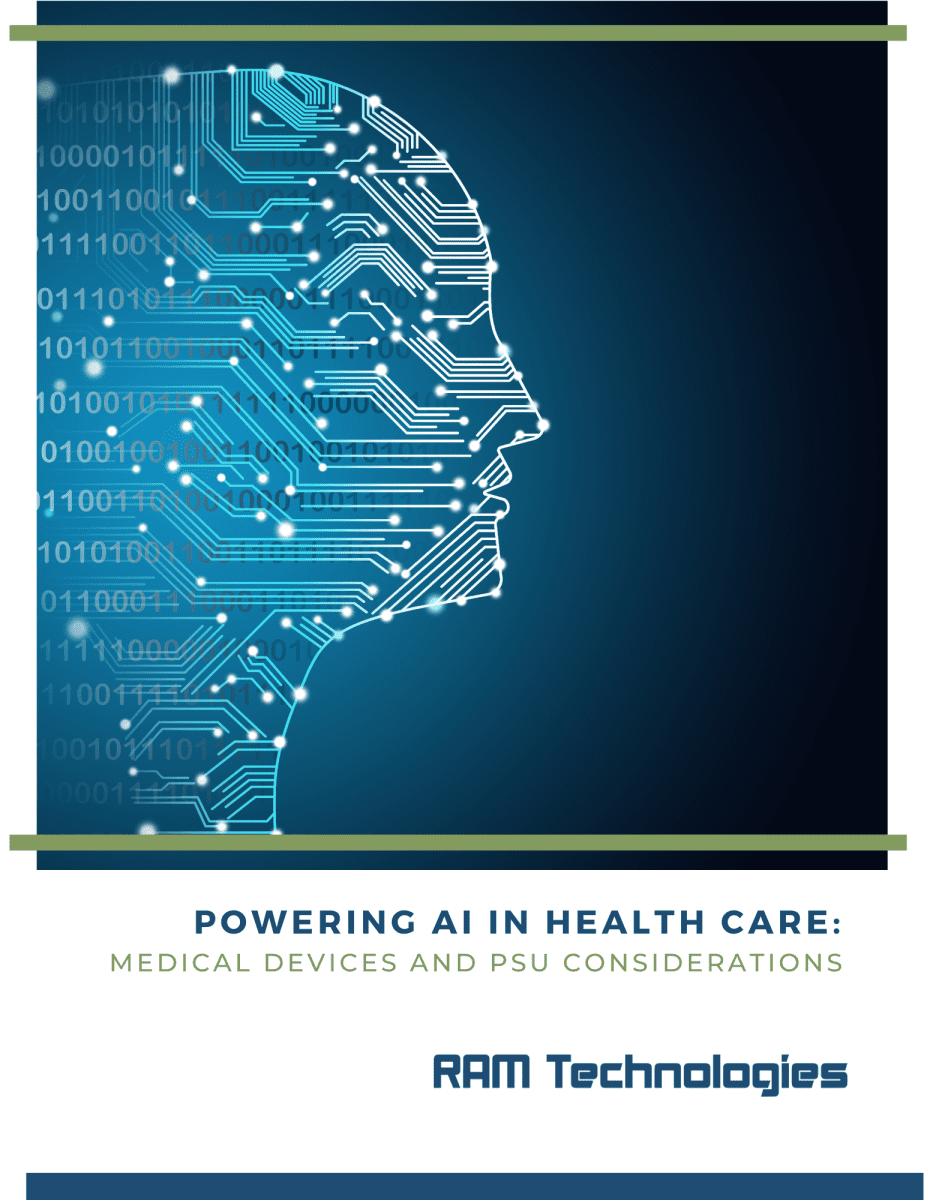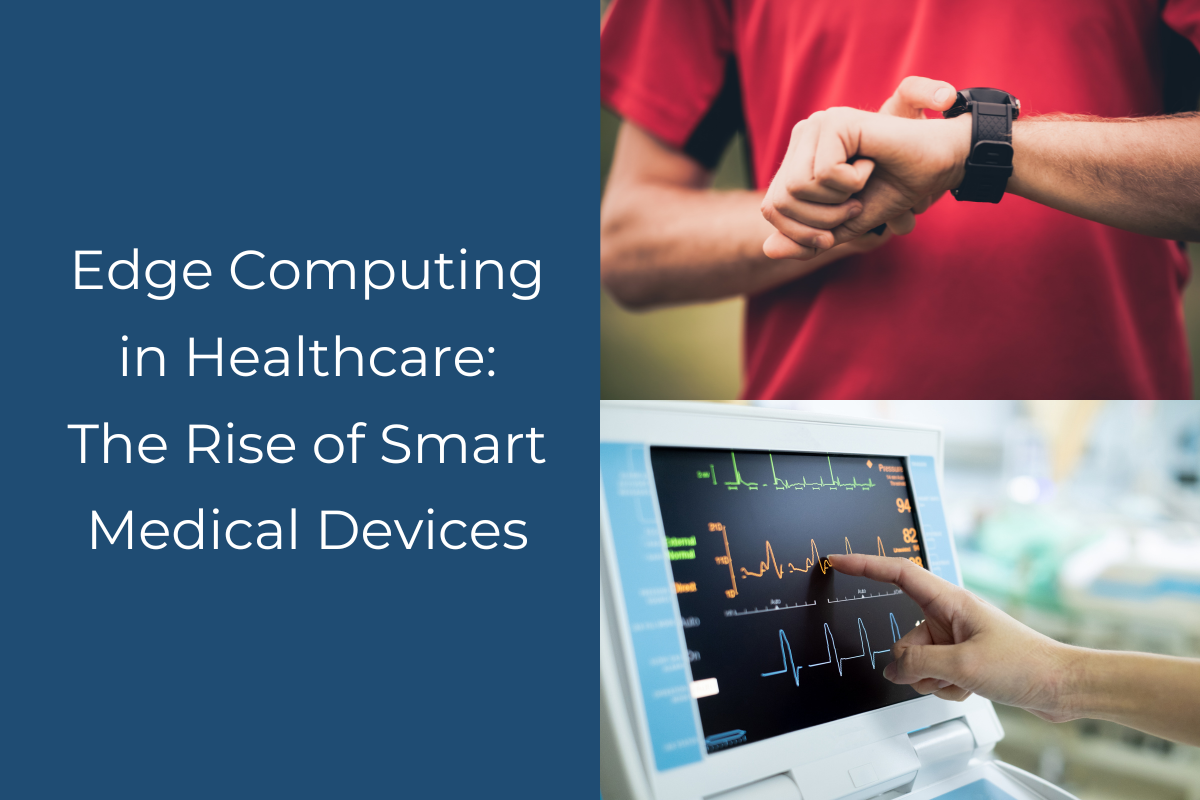The Internet of Medical Things (IoMT) market is large and on the rise. It was valued at $144.23 billion in 2022. The market is predicted to grow at a compound annual growth rate of 20.4% through 2030. Medical devices, particularly wearable devices, can generate a wealth of data and oftentimes rely on real-time decisions that are best served by edge computing. We’ll cover what’s included in IoMT devices, why edge computing in healthcare is on the rise, and power supply considerations to enable this real-time computing.
What are Examples of IoMT Devices?
While it’s common to think of consumer-grade wearables, such as smart watches, as being part of IoMT devices, there are many other devices that fall under this category.
Smaller-scale devices include clinical-grade wearables and smart pills. However, hospital monitors and devices can also have this level of connectivity. Any machines that send data to the cloud, both at home and in clinical settings, may qualify as IoMT devices.
What is Edge Computing?
Edge computing works to decentralize the computing and storage processes and move them closer to the devices produce data and the users who benefit from the data. By spreading out these processes and bringing them to the edge, companies can improve performance and cut down on latency.
What is Accelerating Edge Computing?
While the IoMT device market is one contributing factor to the growth of edge computing, a few other technologies and trends also play a role. For example, 5G networks offer a high-speed, low-latency connectivity that makes it possible for edge computing applications to operate. Real-time processing would be difficult, or sometimes impossible, without this level of connectivity.
Artificial intelligence and machine learning (AI/ML) are technologies often used in IoMT devices and alongside edge computing. Bringing AI to the edge can reduce the reliance on cloud-based processing. It can also make AI programs more responsive in real time.
Benefits of Edge Computing in Healthcare
Processing data closer to its source can be beneficial for a number of reasons. Edge computing can reduce latency and improve reliability. When data doesn’t have to travel as far, real-time data analysis becomes a possibility, which can improve the patient experience and be significantly powerful in emergency situations. Processing at the edge also allows for local processing even when there are network disruptions, making computing more reliable.
Edge computing is also important for security and privacy reasons, particularly for fields like health care. Personally identifiable information (PII) and sensitive health records can be compromised, so bringing sensitive information closer to it source can improve data security.
Trends in Edge Computing for Medical Devices
AI-powered diagnostics, remote patient monitoring, and advances in telemedicine are all great use cases for edge computing with medical devices. When edge computing and AI combine, devices are able to perform onsite analysis, cutting down on the time it takes to detect anomalies and reach a diagnosis, for example.
Remote patient monitoring is already being used and is likely to become even more prevalent thanks to edge computing. Healthcare providers can remotely monitor patients with chronic conditions or potentially concerning symptoms and intervene proactively when they receive real-time data enabled by edge computing.
Telemedicine can be an incredibly effective way to reach patients in remote areas. With preexisting connectivity issues, it may not be able to reach everyone. Edge computing increases the telehealth user experience. A better connection also means clinicians are more likely to make well-informed decisions remotely.
Powering the Future: Considerations for Edge Computing PSUs
When so much data is being processed and stored, it can take a toll on battery life. Wearables can struggle with this, and so can larger medical devices that rely on edge computing.
When medical device manufacturers are developing products with edge computing in mind, they need to choose a power supply unit (PSU) that is reliable, efficient, secure, and designed to work in medical devices. PSUs not only need to be able to handle the data and computing challenges presented by edge computing, they also need to be reliable.
RAM Technologies is here to provide medical-grade power supply units for manufacturers looking to harness the power of edge computing. Our 800-watt PSU is designed for embedded applications in graphics-intensive systems. We also offer a 650-watt small form factor PSU that can run a high-end graphics card.
Are you ready to work with a partner that can power what’s next?
RAM Technologies’ power supplies are 60601-1 3.2 certified and meet 60601-1-2 EMC standards. When you’re designing your medical device and need help with a PSU, contact us for details.

Download the AI/ML Summary
Artificial Intelligence and Machine Learning (AI/ML) are changing the medical device landscape. Get a summary of the latest trends and where we think AI/ML can go with medical devices by downloading our guide.
More Resources:
Predictive Analytics in Health Care and PSU Considerations
Trends in FDA-Authorized AI/ML Devices
AI Medical Devices and FDA Approval: A Review in the Lancet
